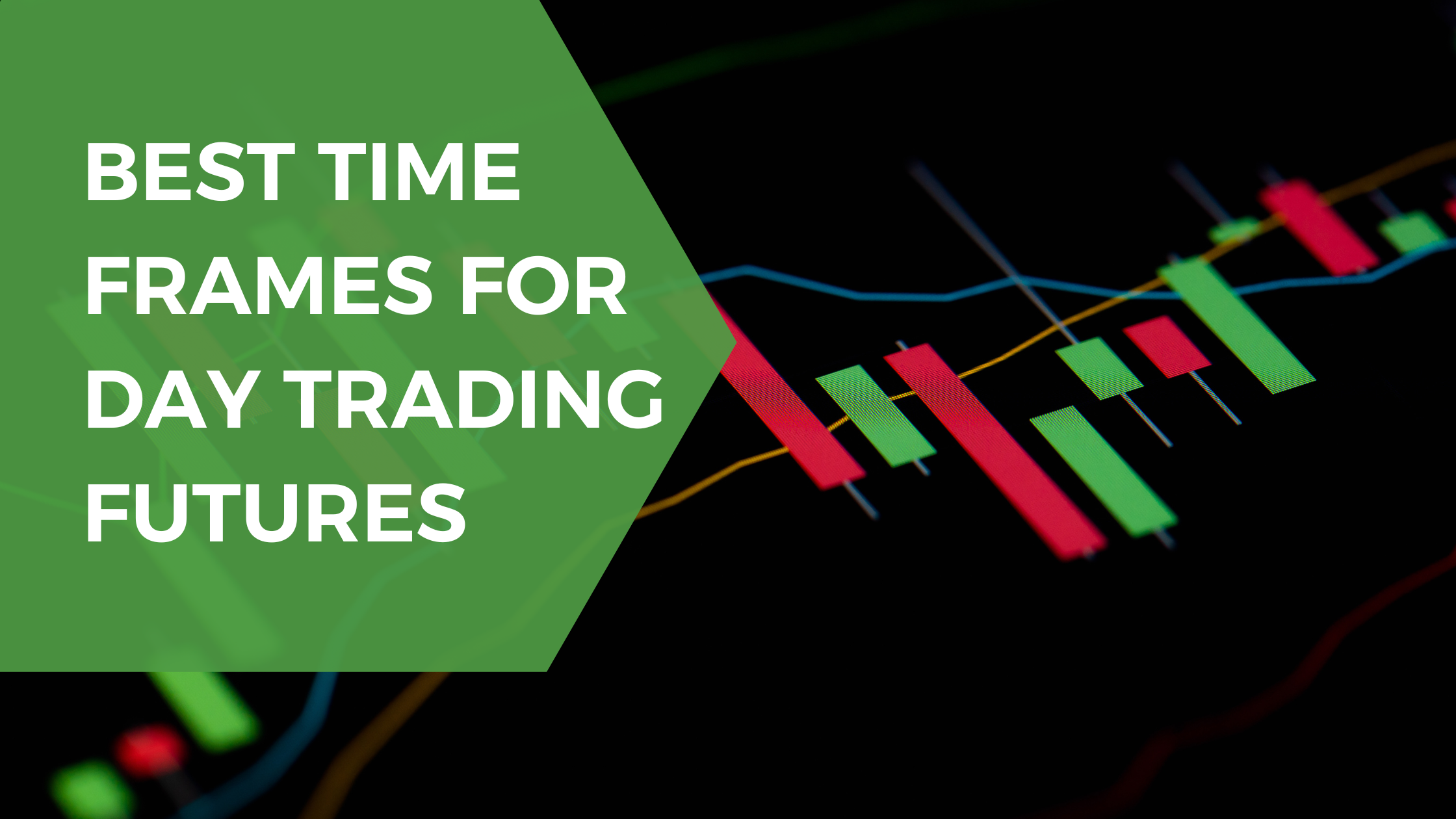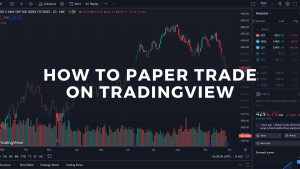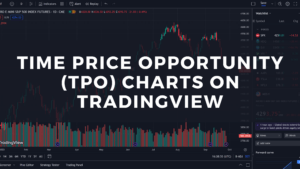This article on Best Time Frames for Day Trading is the opinion of Optimus Futures, LLC.
- Selecting the appropriate time frame is crucial for attempting to optimize day trading success.
- Understanding the advantages and drawbacks of tick, one-minute, five-minute, fifteen-minute, and TPO charts may help you avoid making blunders when scalping or day trading.
- Choosing the right time frame can help traders adjust to varying market dynamics.
The world of day trading can be a thrilling, fast-paced environment where split-second decisions can result in significant gains or losses.
For those who have chosen to embrace this adrenaline-pumping pursuit, understanding the importance of selecting the right time frame for trading is crucial.
What Does ‘Trading Time Frame’ Mean?
In simpler terms, a trading time frame is just the time-based interval you see on a chart.
Intervals on charts can range from super short, like just a single tick, to much longer, such as monthly charts. Remember, the ideal time frame for a day trader won’t be the same as for a position trader or investor.
Even among day traders, preferences can vary – some might like trading on a 1-minute chart, while others go for a 5-minute chart. Believe it or not, those few minutes can make a world of difference.
RELATED | Multiple Time Frame Analysis: A Key To Optimal Trading
Impact of Time Frame on Your Day Trading Efforts
How big of a difference can a few minutes make? Let’s explore this in more detail:
Trade frequency: Some traders engage in the markets frequently, while others prefer a more relaxed approach. Shorter time frames offer more action, with many trading opportunities in a single day.
On the flip side, longer time frames mean fewer trades, giving you some breathing room.
Market noise: Do you know those unpredictable price swings or market noise that can throw a wrench in your trading plans?
Shorter time frames tend to capture more of this commotion, offering more chances to trade but with less certainty about their importance.
On the other hand, longer time frames help sift through the noise, providing a clearer picture of the market’s true movements.
Risk management: Different time frames come with different risks. Shorter ones mean smaller price movements, so you’ll need tighter stop-losses and profit targets.
This could lead to getting stopped out of trades more often. Longer time frames call for wider stop-losses and profit targets, which may result in larger drawdowns but can keep you in trades longer.
Trade duration: How long do you want to stay in a trade? You might be in and out in a flash with shorter time frames, while longer ones could have you holding positions for hours or even all day.
There’s no right or wrong preference here. However, longer time frames give you the chance to analyze and manage your trades more thoroughly, while ultra-short-term time frames may not offer the same opportunity.
Psychological factors: Trading can be an emotional roller coaster. Shorter time frames often ramp up the intensity, requiring fast decision-making and keeping up with swift market shifts.
In contrast, longer time frames tend to be more composed, but the anticipation of waiting for trade setups might still trigger anxiety.
Choosing the right time frame is essential in your day trading adventure, as it impacts aspects ranging from the number of trades you make to your emotional state.
Considering these factors, you’ll be well-equipped to discover the ideal time frame that suits your distinct trading approach.
Stop-Loss Disclaimer: The placement of contingent orders, such as a “stop-loss” or “stop-limit” order, will not necessarily limit your losses to the intended amounts since market conditions may make it impossible to execute such orders.
Tick Charts
A tick chart displays price movements based on a specific number of transactions, or “ticks,” instead of traditional time-based intervals.
Tick Chart Pros
- Responsive to market activity: Tick charts display price action in real-time, allowing traders to see and react to shifts in market momentum and volatility more quickly than with time-based charts.
- Highlights liquidity and trading volume: Tick charts provide insights into market liquidity and trading volume, helping traders to identify strong support and resistance levels and potential breakouts.
- Reduces noise in slow markets: In less active markets, tick charts generate fewer bars, filtering out insignificant price movements and allowing traders to focus on meaningful price action.
Tick Chart Cons
- Limited historical perspective: Tick charts focus on short-term price movements, which may not provide enough context for traders who rely on longer-term trends and patterns.
- Inconsistent time intervals: Because tick charts are based on the number of transactions, the time between bars can vary, making it harder to analyze time-based patterns and indicators.
- Data and platform requirements: Accessing tick data and creating tick charts may require specialized platforms or data subscriptions, potentially increasing costs and complexity for traders.
Best Use-Case of Tick Charts
One of the most advantageous uses of tick charts is for identifying short-term market momentum, volatility, and potential trade entry and exit points in fast-moving, active markets.
READ ALSO | An Introduction to Tick Charts and How to Trade Them in Futures Markets
One Minute Chart
One Minute Chart Pros
- Faster trade execution: One-minute charts enable traders to react quickly to emerging trends, potentially allowing for faster trade execution and capturing short-lived opportunities.
- Adaptable to various strategies: The consistent time frame allows for easy integration with a range of trading strategies, including scalping, momentum trading, and support/resistance trading.
- Identifying market open volatility: One-minute charts are especially useful for capturing the increased volatility during the first minutes of the market opening, offering potential trading opportunities based on sharp price movements.
One Minute Chart Cons
- Noise in choppy markets: One-minute charts can display a lot of insignificant price fluctuations, making it difficult to discern meaningful trends or price action.
- Inadequate for long-term analysis: Short time intervals may not provide enough context for understanding broader market trends and assessing long-term price movements.
- Increased stress and overtrading: The rapid pace of one-minute charts can lead to emotional trading decisions, causing traders to overtrade or make impulsive moves.
Best Use-Case of One-Minute Charts
The one-minute time frame primarily serves as a timing tool in day trading. For instance, when an entry opportunity is identified on a higher time frame, the one-minute chart can be utilized to fine-tune the entry point with precision.
Five Minute Chart
Five Minute Chart Pros
- The balance between short-term and long-term trends: Five-minute charts balance capturing short-term price movements while offering insights into longer-term trends, making them suitable for various trading styles.
- Reduced noise and improved clarity: Compared to one-minute charts, five-minute charts display fewer insignificant price fluctuations, allowing traders to focus on more meaningful trends and price action.
- Lower trading frequency: The slower pace of five-minute charts can help traders avoid overtrading and impulsive decisions, promoting more disciplined and methodical trading.
Five Minute Chart Cons (note that most of these pertain to scalpers)
- Less suitable for scalping: The wider time frame may not be ideal for scalping strategies, which rely on frequent trades and quick profit-taking based on small price movements.
- Limited precision for entries and exits: Compared to one-minute charts, five-minute charts provide less granularity for timing precise trade entry and exit points, particularly in fast-moving markets.
- Insufficient resolution during high volatility: In periods of extreme market volatility, five-minute charts may not provide the level of detail needed to effectively analyze rapid price fluctuations, potentially causing traders to miss important short-term dynamics.
Best Use-Case of Five-Minute Charts
The five-minute time frame is particularly beneficial for day traders looking to balance short-term price movements with longer-term trends, enabling the execution of more methodical and strategic trades while still maintaining the ability to capitalize on intraday opportunities.
Fifteen Minute Chart
Fifteen Minute Chart Pros
- Enhanced focus on significant trends: Fifteen-minute charts emphasize more substantial trends and price movements, filtering out minor fluctuations and improving overall trend analysis.
- Suitable for longer intraday trades: The extended time frame is appropriate for day traders employing longer intraday trades, allowing for more substantial price movements to unfold.
- Reduced stress and trading frequency: The slower pace of fifteen-minute charts promotes a more relaxed trading environment, encouraging methodical decision-making and reducing the likelihood of overtrading.
Fifteen-Minute Chart Cons
- Not ideal for scalping or rapid momentum trades: The wider time frame may not be suitable for fast-paced trading strategies like scalping or momentum trades that rely on short-term price movements.
- Limited precision for entries and exits: Fifteen-minute charts offer less granularity for timing precise trade entry and exit points, particularly in volatile markets.
- Slower to react to market momentum shifts: Fifteen-minute charts may not capture sudden shifts in market momentum as quickly as shorter time frames, resulting in traders being slower to react to emerging trends or reversals.
Best Use-Case of Fifteen Minute Chart
The fifteen-minute time frame is particularly beneficial for day traders focusing on longer intraday trades and seeking to analyze more significant trends while reducing the impact of minor price fluctuations.
This time frame supports a more relaxed trading approach, promoting methodical decision-making and risk management. Its slower pace also allows traders to monitor and trade multiple charts at the same time.
The TPO Chart
Time Price Opportunity (TPO) is a component of the Market Profile, a method used by traders to analyze the price and volume distribution of a financial instrument over a specific time frame. TPO charts display price movements in relation to time, offering a unique perspective on market structure and dynamics.
Here are a few pros and cons of using TPO in a day trading context.
Because its charting environment is so different, we must show you what it looks like below.
Using Time Price Opportunity (TPO) charts in your trading involves several steps.
First, familiarize yourself with the basic concepts of TPO charts, including value area, Point of Control (POC), and high-volume/low-volume nodes.
Understanding these concepts can help you effectively analyze the market structure, gaining insights into the distribution of trading activity and determining whether the market is trending or range-bound.
Next, identify key price levels on the TPO chart by pinpointing high-volume and low-volume areas, which can serve as potential support, resistance, or breakout levels for trading.
Incorporating TPO chart analysis with other technical analysis tools and risk management techniques is essential to develop a comprehensive trading strategy that can withstand various market conditions.
Finally, when executing trades, use your TPO analysis, market trend observations, and identified key price levels to make informed trade entry and exit decisions while adhering to your risk management plan.
Integrating TPO charts into your trading approach can improve your ability to navigate different market scenarios and potentially enhance your overall trading performance.
TPO Chart Pros
- Unique market perspective: TPO charts provide a distinct view of the market structure by displaying price movements in relation to time, offering valuable insights into market dynamics.
- Identifies key price levels: TPO charts help traders recognize high-volume and low-volume areas, which can serve as strong support, resistance, or potential breakout levels.
- Trend analysis: TPO charts enable traders to identify trending or range-bound markets by examining the distribution of trading activity, providing critical information for day trading strategies.
TPO Chart Cons
Complexity: TPO charts and their associated concepts, such as value area and Point of Control (POC), can be challenging to learn and interpret, particularly for novice traders.
Limited availability: Not all trading platforms offer TPO chart functionality, potentially requiring traders to seek out specialized software or data subscriptions. If you’re interested in using a TPO strategy, then request an OptimusFlow demo here.
Complementary, not standalone: TPO charts are best used in conjunction with other technical analysis tools and risk management techniques, meaning traders cannot rely solely on TPO analysis for their trading decisions.
Best Use-Case of TPO Chart
One of the most advantageous uses of TPO charts in day trading is to gain insights into market structure, identify key price levels, and determine market trends.
By incorporating TPO analysis into a comprehensive trading strategy, traders can improve their trade entry and exit points, manage risk, and adapt their approach based on the prevailing market conditions
DIG DEEPER | Trading With TPO Charts: The Basics of Time-Based Charting
The Bottom Line
Selecting the appropriate time frame for day trading is a critical decision influencing various aspects of your trading experience.
Understanding the pros, cons, and most advantageous use cases of different chart types can help you identify the ideal time frame for your trading style.
There are also several different strategies you can use to combine different time frames. By considering these factors and incorporating them into a comprehensive trading strategy, you can enhance your decision-making and risk management, which can potentially lead to more overall trading success.
There is a substantial risk of loss in futures trading. Past performance is not indicative of future results. The example strategies in this article are for informational purposes only and are not intended to be trading advice.

















